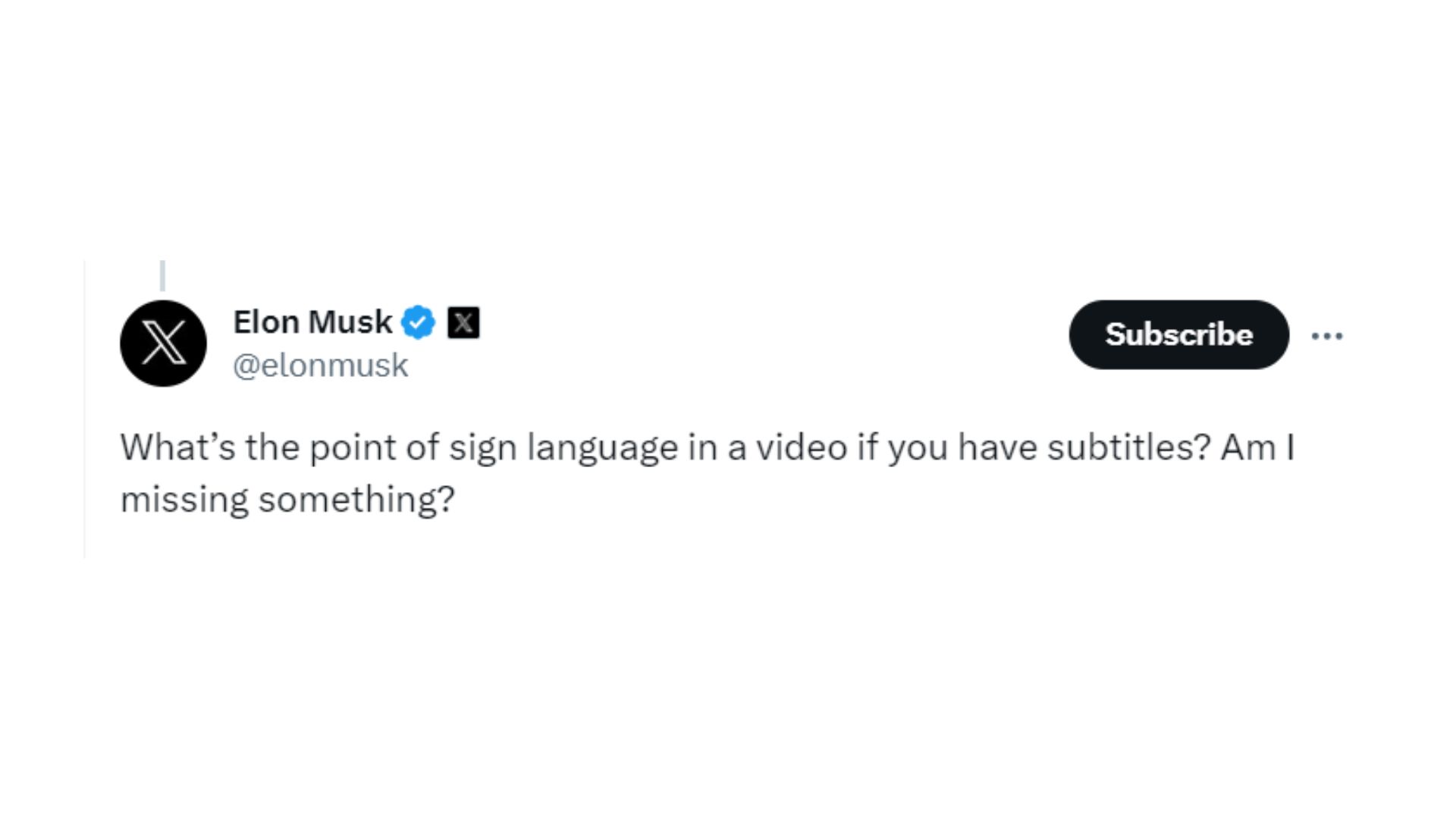Elon Musk recently responded to an accessible media video featuring Disney’s Karey Burke discussing the significance of LGBTQIA and minority characters being included in their narratives. The video clip showcased a picture-in-picture sign language interpreter alongside captions. Musk questioned, “What’s the point of sign language in a video if you have subtitles? Am I missing something?”
In this article, Inclusive Communication Services (ICS) is highlighting response tweets answering Elon Musk’s question.
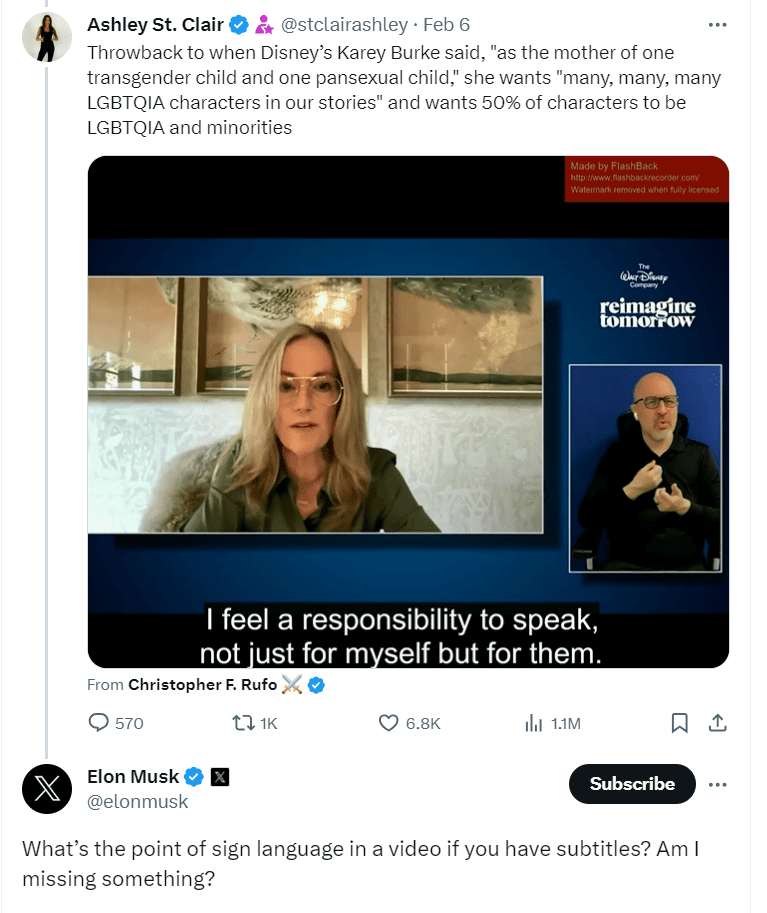
Deafness exists on a spectrum.
No two Deaf individuals are identical in their accommodation preferences. A person who is hard-of-hearing and primarily speaks English may prefer subtitles over sign language. An individual who was born Deaf and primarily uses American Sign Language (ASL) may prefer sign language translation over subtitles. Deafness exists on a spectrum. Making sure everyone can receive and understand information means including multiple accessibility assets.
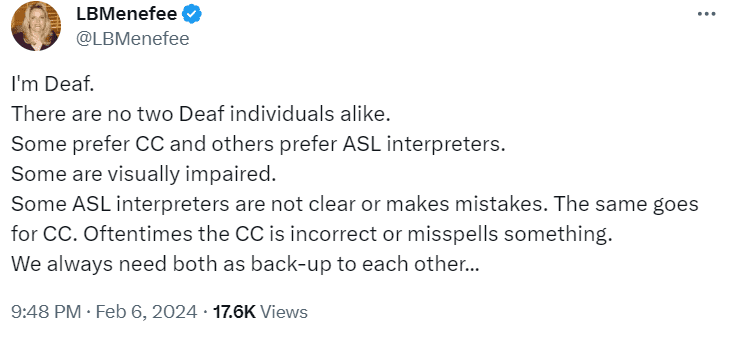
English and American Sign Language (ASL) aren’t the same languages.
ASL is NOT visual English. American Sign Language (ASL) is a complete, natural language that has unique linguistic properties of spoken languages, including distinct grammar and colloquialisms, despite being expressed by movements of the hands and face. It is the primary language of many North Americans who are Deaf, DeafBlind, and hard-of-hearing.

Sign language conveys the nuances of communication.
While subtitles are an excellent communication tool, they don’t provide the same experience as sign language interpretation. Imagine watching your favorite comedian on mute, only relying on the subtitles. The experience lacks context in which important information is communicated, including, tone, intonation, and emotion.
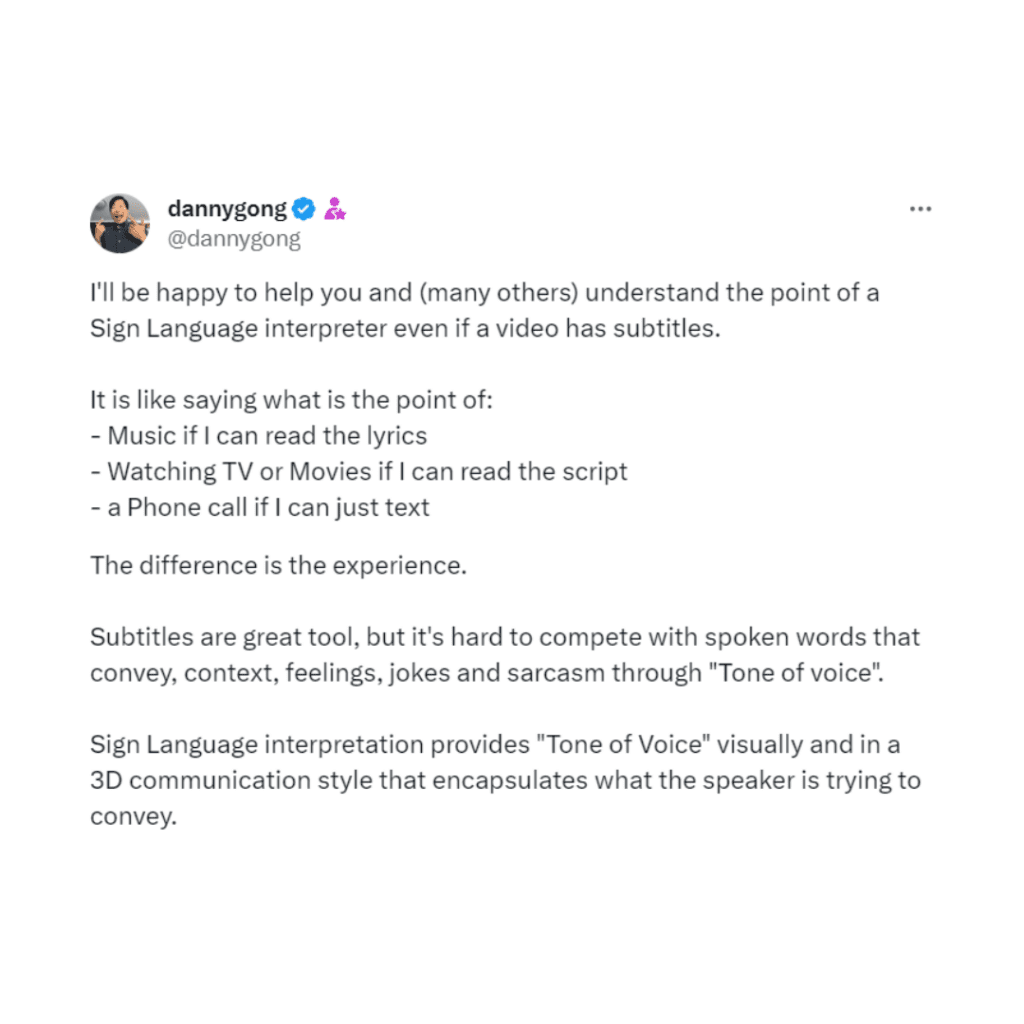
Misconceptions about accessibility are still common in 2024.
Despite the eagerness of the Deaf community to educate, many response tweets continued to dismiss and devalue accessibility efforts. Some claimed that Disney’s inclusion of accessibility assets was merely a form of virtue signaling. For those without disabilities, understanding the importance of accessibility accommodations can be challenging.
On a more positive note, some tweets expressed gratitude to the Deaf community for providing clarifications. One tweet reflected, “First reacted unknowingly laughing but removed my comment after reading insightful explanations. Learned something today.”
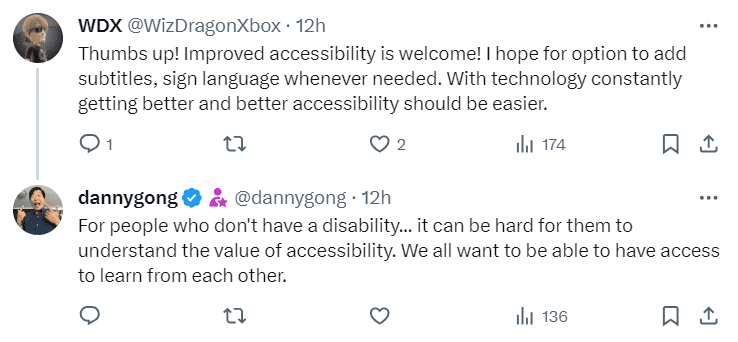
Helping shape the future of accessible media.
Are you interested in enhancing the accessibility of your video content now that you understand their fundamental importance? Inclusive Communication Services (ICS) is here to assist you! Discover our comprehensive suite of Accessible Media Services (AMS), including:
- Picture-in-picture sign language translation
- Captioning and subtitles (CC) and (OC)
- Multilingual subtitles
- Multilingual voiceover
- Audio description (AD) for the Blind
Still have questions?
Schedule a no-commitment consultation to embark on your inclusive journey!
